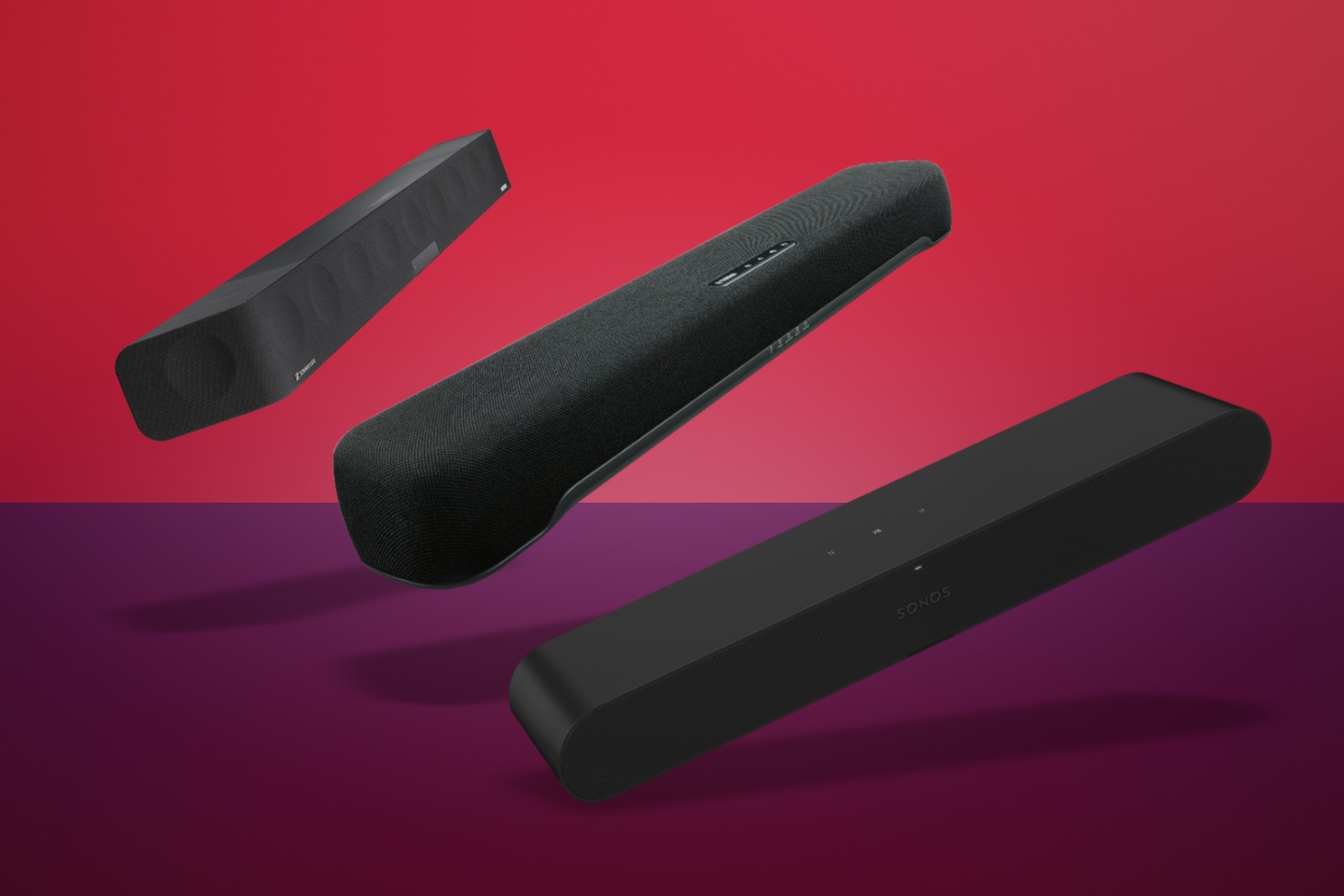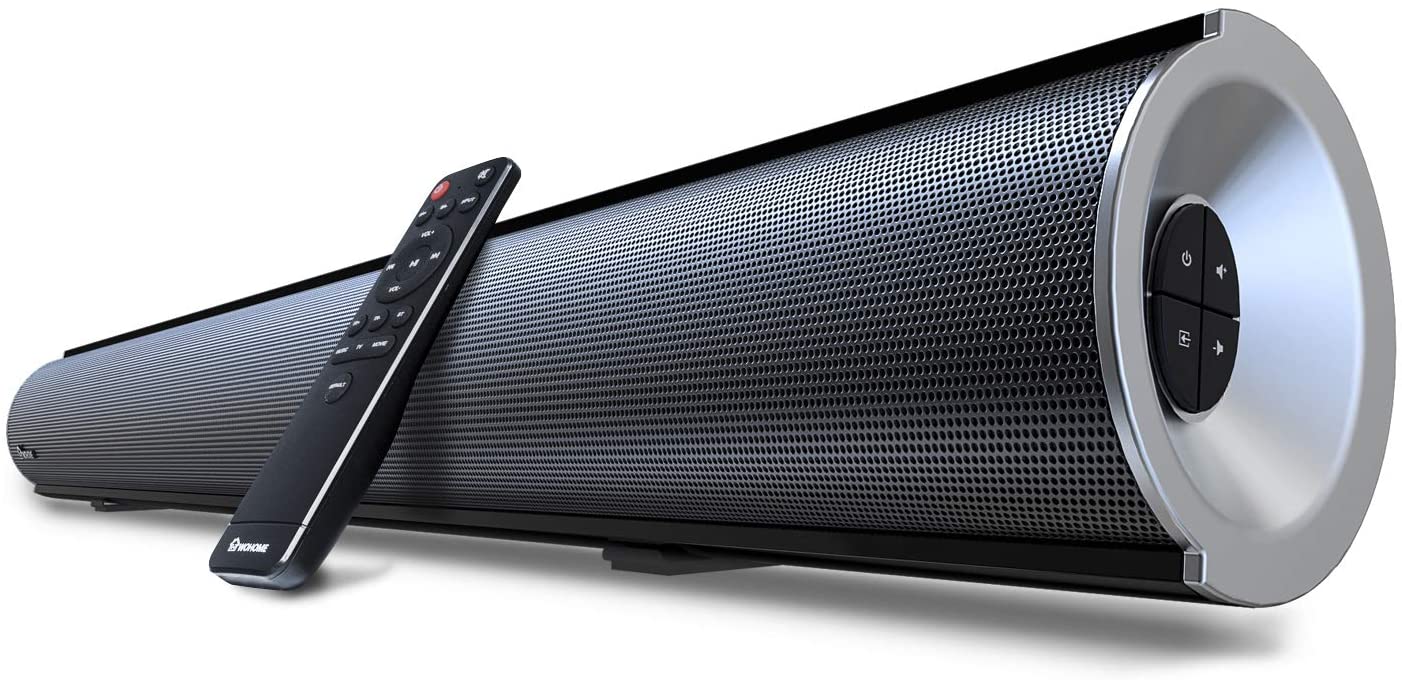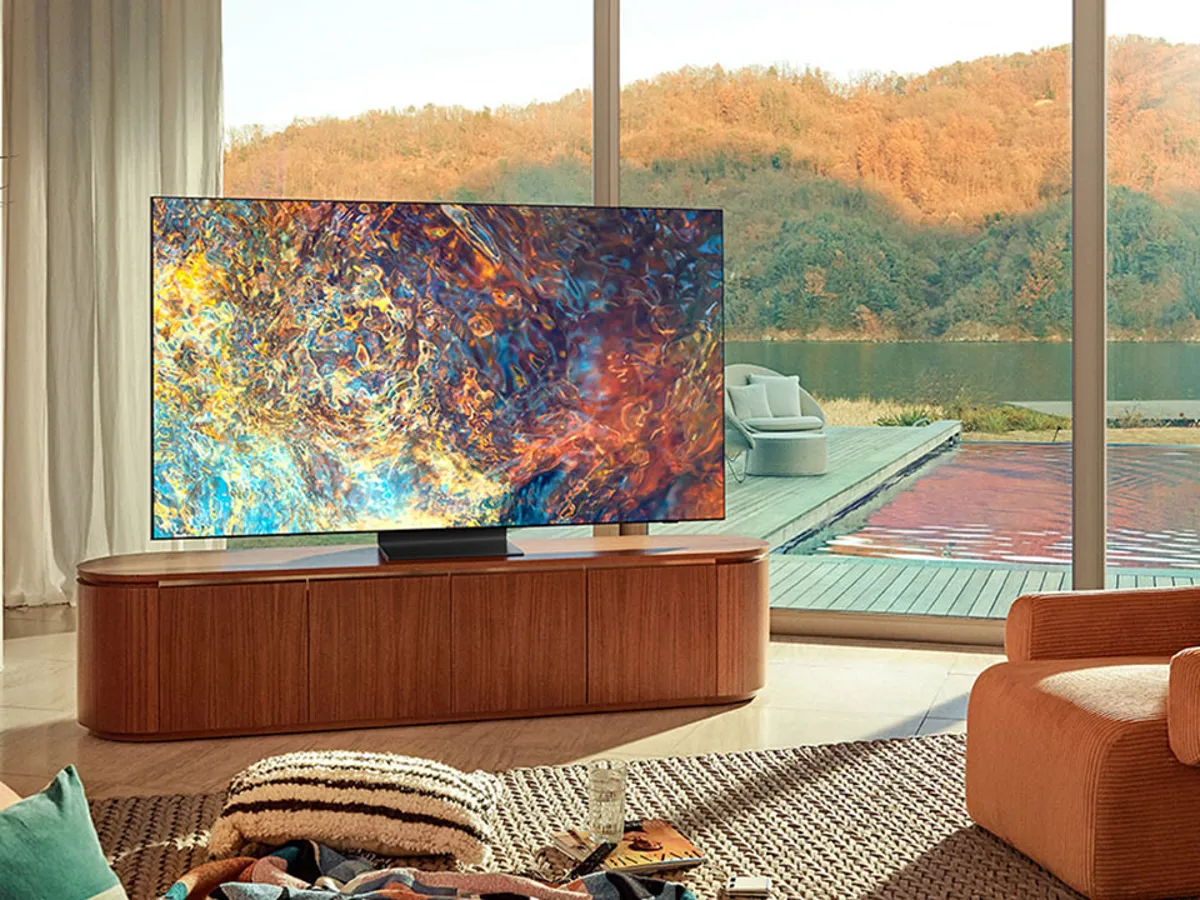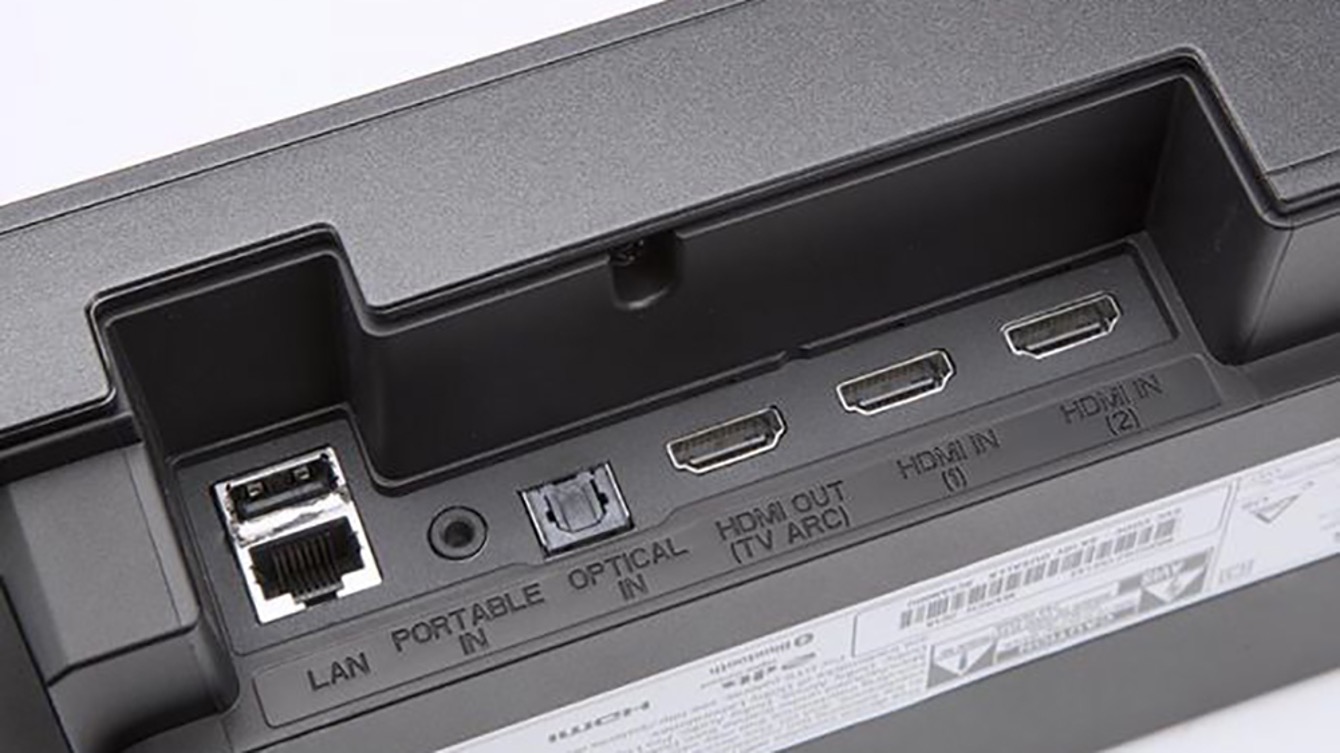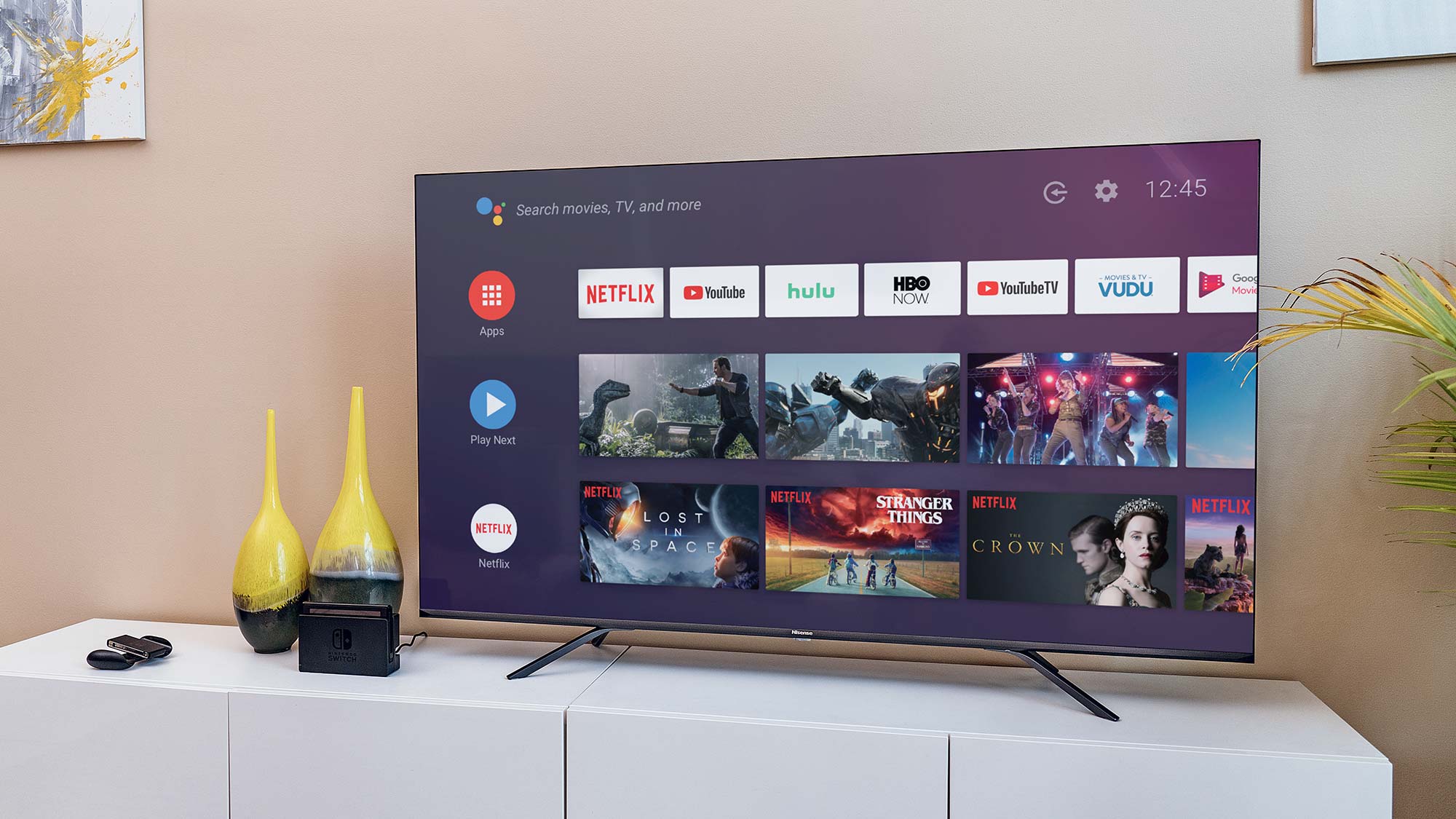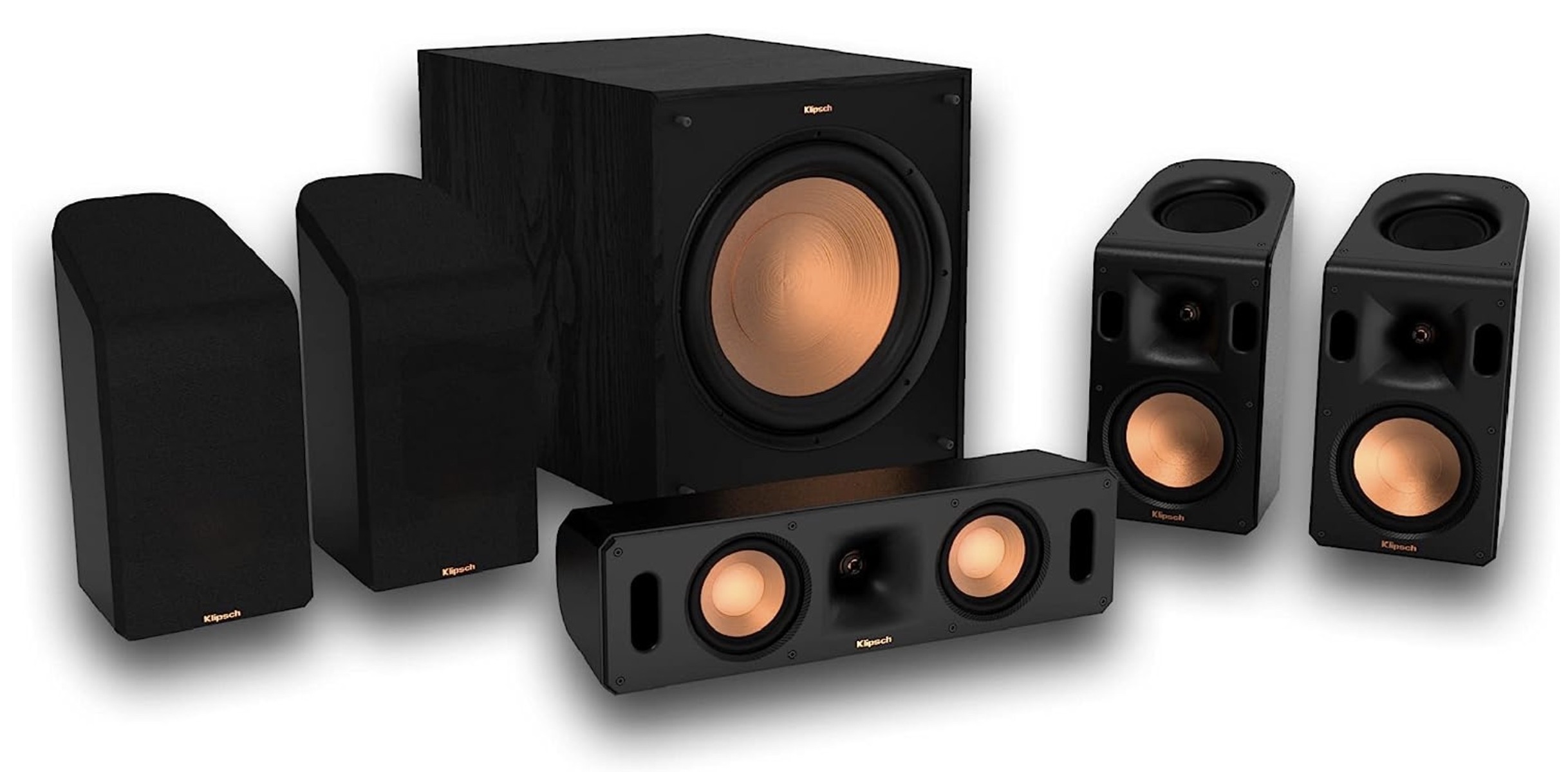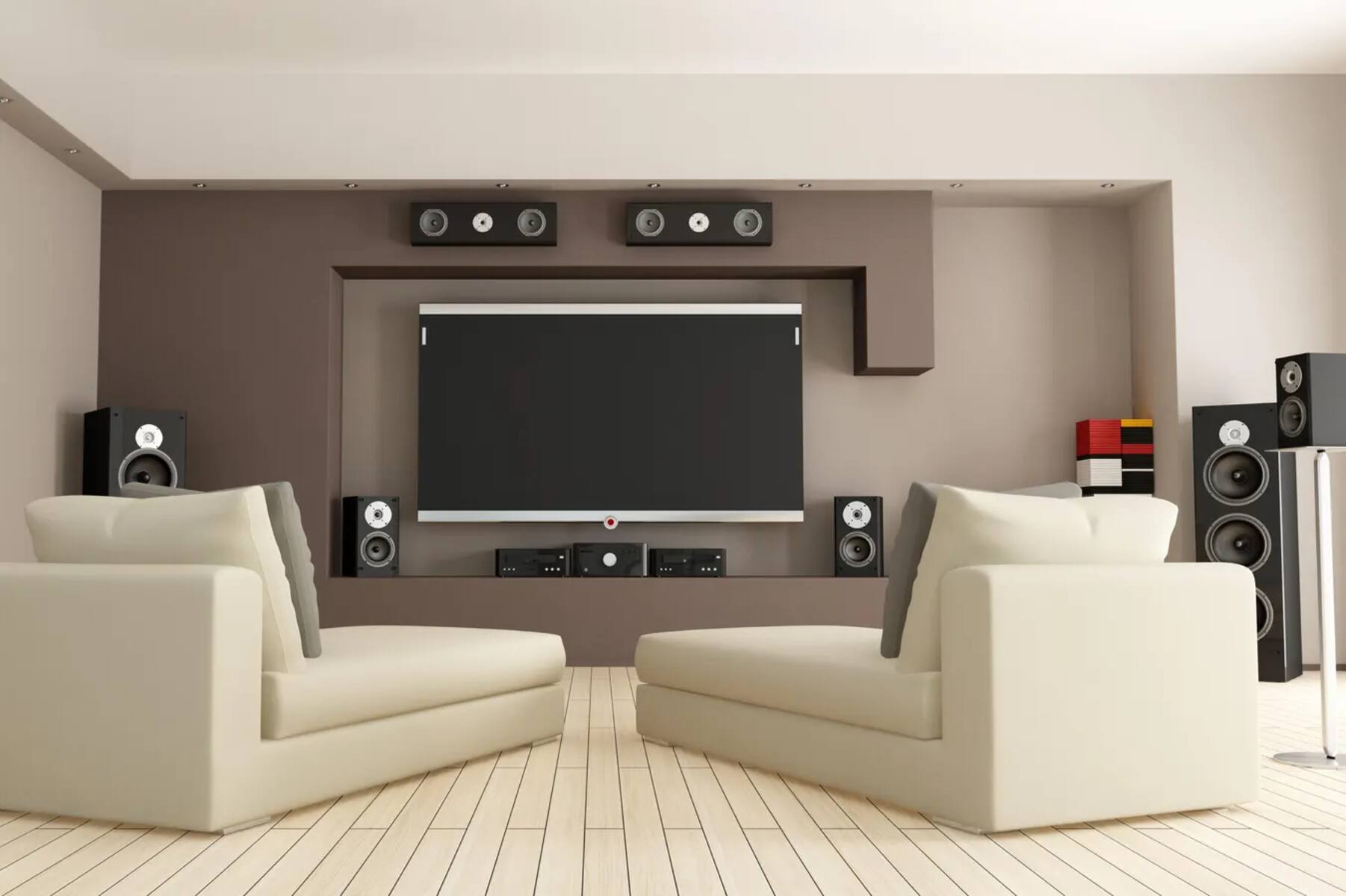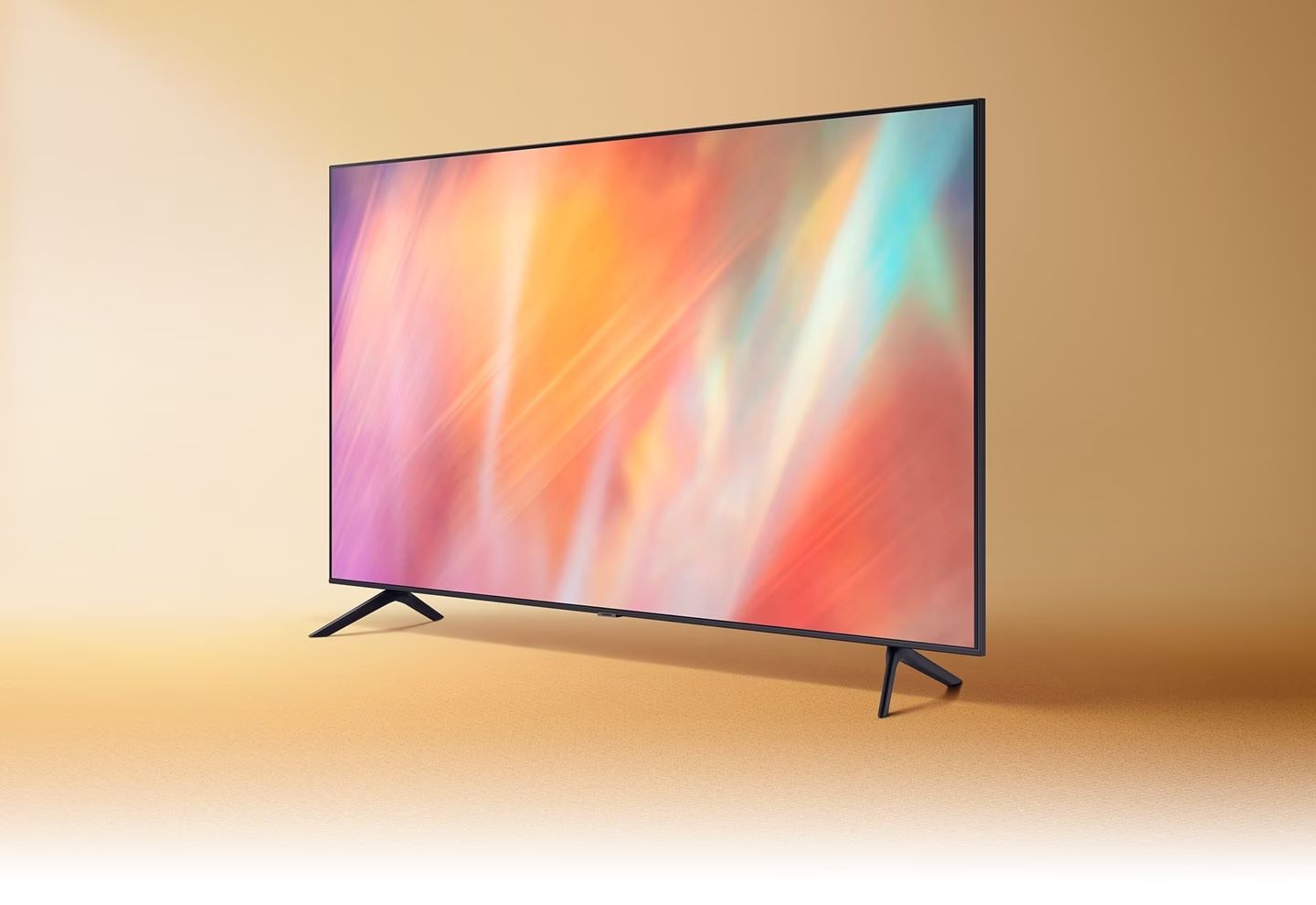Introduction
When it comes to enhancing your home audio experience, soundbars have become a popular choice. These sleek and compact devices are designed to deliver high-quality sound without the need for a bulky and complex audio system. Whether you’re watching movies, listening to music, or playing games, a soundbar can significantly elevate your audio immersion.
But with the wide variety of soundbars available on the market, choosing the right one can be a daunting task. To ensure that you make an informed decision, there are several factors to consider. In this article, we will guide you through the essential features and considerations to look for when buying a soundbar.
By understanding these key elements, you’ll be able to narrow down your options and find the perfect soundbar that suits your needs and preferences. So, let’s dive in and explore the important factors to consider in your quest for the ultimate audio upgrade.
Audio Quality
One of the most crucial factors to consider when buying a soundbar is the audio quality it delivers. After all, the primary purpose of a soundbar is to enhance your audio experience. Therefore, it’s important to look for a soundbar that provides clear, immersive, and rich sound.
When evaluating the audio quality, consider the power output and the number of speakers in the soundbar. Higher power output generally translates to louder and more impactful sound. Additionally, soundbars with multiple speakers, including subwoofers and tweeters, can create a more balanced and dynamic audio performance.
Another aspect to consider is the soundbar’s audio processing technology. Look for features like Dolby Atmos or DTS:X, which can provide a three-dimensional audio experience and simulate surround sound, adding depth and realism to your audio. These advanced technologies can greatly enhance your movie-watching and gaming experiences.
Additionally, it’s important to consider the frequency response range of the soundbar. A wider frequency response allows for better reproduction of high and low frequencies, resulting in more detailed and accurate audio. Look for a soundbar with a broad frequency range to ensure the best sound reproduction across varying types of content.
Lastly, when possible, try to listen to the soundbar in person or read reviews from trusted sources to get an idea of its audio quality. This will give you real-world insights into how the soundbar performs and help you make an informed decision.
Connectivity Options
When purchasing a soundbar, it’s essential to consider the connectivity options it provides. The right connectivity options will allow you to seamlessly connect your soundbar to various devices, such as your TV, gaming console, or mobile devices. Here are some key connectivity options to look for:
1. HDMI: HDMI ports are crucial for connecting your soundbar to your TV or other audio/video devices. Look for a soundbar that supports HDMI ARC (Audio Return Channel) or eARC, as this allows for bidirectional audio transmission between the TV and soundbar. This simplifies the setup process and enables you to control the soundbar using your TV remote.
2. Optical Input: Many soundbars feature an optical input, which allows for a digital audio connection. This is particularly useful if your TV doesn’t have an HDMI ARC or eARC port. Optical cables can transmit high-quality audio signals, ensuring optimal sound performance.
3. Bluetooth: Bluetooth connectivity enables you to wirelessly stream audio from your smartphone, tablet, or other compatible devices. This provides more flexibility in playing music or podcasts directly from your mobile devices without the need for any physical connections.
4. Wi-Fi and Multi-room Audio: Some advanced soundbars offer Wi-Fi connectivity, allowing you to connect them to your home network. This enables you to stream music from online services like Spotify or access your personal music library. Additionally, look for soundbars that support multi-room audio, allowing you to sync audio across multiple speakers in different rooms.
5. USB and Auxiliary Ports: USB and auxiliary ports provide additional options for connecting external devices such as USB drives, MP3 players, or other audio sources. This can be handy when you want to play media from these devices directly through your soundbar.
By considering these connectivity options, you can ensure that your soundbar integrates seamlessly with your existing audio and video devices, offering a hassle-free and convenient audio experience. Take note of the devices you plan to connect to your soundbar and verify that the soundbar has the necessary ports and features to accommodate them.
Size and Placement
The size and placement of your soundbar are important factors to consider in order to achieve optimal sound performance and aesthetic integration with your TV or home theater setup. Here are some considerations when it comes to size and placement:
1. Soundbar Size: Consider the size of your TV and the space you have available. A soundbar that is too large may overpower your TV or become visually distracting, while one that is too small may not provide the immersive sound experience you desire. Measure the width of your TV and choose a soundbar that complements it in terms of size and aesthetics.
2. Placement: Depending on the design and layout of your TV setup, you have a few placement options for your soundbar. The most common placement is directly below the TV, either on a stand or mounted on the wall. This ensures that the sound is projected towards the audience for optimal sound dispersion. Alternatively, some soundbars can be placed in front of the TV, especially if there is limited space or if the TV is already wall-mounted.
3. Height: Consider the height of the soundbar in relation to your seating position. Ideally, the soundbar should be positioned at ear level when you are seated. This ensures that the audio is directed towards you, providing a more immersive and balanced sound experience.
4. Mounting Options: If you prefer a clean and clutter-free setup, look for soundbars that come with wall-mounting brackets. This allows you to securely mount the soundbar directly beneath your TV, saving space and creating a sleek and streamlined look.
5. Room Acoustics: Take into account the acoustics of your room when positioning your soundbar. Avoid placing it in corners or against surfaces that may reflect sound, as this can impact the overall sound quality. Experiment with different placements to find the optimal position that minimizes sound reflection and maximizes the sound performance.
By considering the size and placement of your soundbar, you can create an immersive audio experience that seamlessly integrates with your TV setup while complementing the overall aesthetics of your living space. Remember to take measurements and experiment with different placement options to find the best setup for your specific needs.
Design and Aesthetics
While the performance and features of a soundbar are crucial, it’s also important to consider the design and aesthetics, as it will be a prominent feature in your living room or home theater setup. Here are some factors to consider when it comes to the design and aesthetics of a soundbar:
1. Form Factor: Soundbars come in various shapes and sizes, from slim and compact to wider and more robust designs. Consider the visual impact you want the soundbar to have in your space. A sleek and slim soundbar can seamlessly blend with your TV, while a larger one can make a bold statement, becoming a centerpiece of your entertainment area.
2. Material and Finish: Look for soundbars with high-quality materials and finishes that complement your overall interior design. Whether it’s a brushed metal finish, a smooth matte texture, or a sleek glossy surface, choose a soundbar that matches your personal style and aesthetic preferences.
3. LED Display and Indicator Lights: Some soundbars feature LED displays or indicator lights that can add a touch of sophistication and functionality. These displays can provide useful information like volume levels, input selection, and sound modes, making it easier to navigate and control your soundbar.
4. Button Layout: Consider the placement and layout of the buttons on the soundbar. Look for a design that offers intuitive and easy accessibility to the essential functions without being overly cluttered.
5. Cable Management: Depending on the design of your soundbar, check if it offers cable management solutions. Built-in cable channels or clips can help keep the cables organized and hidden, creating a cleaner and neater setup.
Remember that the soundbar will be a visible component in your entertainment area, so choose a design that reflects your personal style and complements your existing décor. Whether you prefer a minimalist look or a more eye-catching design, finding a soundbar that is visually appealing will enhance both the audio performance and the overall aesthetic appeal of your entertainment space.
Remote Control and User Interface
A soundbar’s remote control and user interface play a significant role in the overall user experience. Here are some considerations to keep in mind regarding the remote control and user interface of a soundbar:
1. Remote Control: Look for a soundbar that comes with a user-friendly remote control. The remote should have well-labeled buttons and an intuitive layout, allowing you to easily navigate through the soundbar’s settings and adjust volume levels, input sources, and sound modes. Additionally, check if the remote has dedicated buttons for frequently used functions like power on/off, mute, and Bluetooth pairing.
2. Smartphone App: Some soundbars offer a smartphone app as an alternative to the physical remote control. These apps provide additional functionality and control options, allowing you to fine-tune the soundbar’s settings from your mobile device. Check if the soundbar you are considering has a dedicated app compatible with your smartphone’s operating system.
3. On-Screen Display: If your soundbar has HDMI connectivity with ARC or eARC support, it may be capable of displaying its settings and menus on your TV screen. This provides a more convenient and visually appealing way to navigate through the soundbar’s settings using your TV’s remote control.
4. Voice Control: Some soundbars are compatible with voice assistants like Amazon Alexa or Google Assistant. This allows you to control the soundbar’s functions using voice commands, making it even more convenient to adjust settings or switch between audio sources hands-free.
5. User-Friendly Interface: Pay attention to the soundbar’s user interface on its display or LED indicator lights. A clear and easy-to-read display or well-designed indicator lights can greatly enhance the user experience, allowing you to quickly identify the selected input, volume level, or sound mode.
A soundbar with an intuitive and user-friendly remote control and user interface will make it effortless to navigate through the settings and tailor the audio experience to your liking. Take the time to explore the remote control and user interface features of different soundbars to ensure that they align with your preferences and provide a seamless user experience.
Compatibility with TV
When selecting a soundbar, it’s crucial to consider its compatibility with your TV. This ensures that the soundbar integrates seamlessly with your television, both in terms of audio output and control. Here are some aspects to review regarding compatibility with your TV:
1. Audio Connection: Verify that the soundbar has the necessary audio inputs or outputs that match the available ports on your TV. The most common audio connection options include HDMI, optical, and analog (3.5mm or RCA) inputs. Consult your TV’s manual or specifications to determine which audio connection options are available.
2. HDMI ARC or eARC: If your TV has an HDMI ARC or eARC port, ensure that the soundbar also supports this feature. HDMI ARC enables bidirectional audio transfer between the TV and the soundbar through a single HDMI cable. This allows you to control the soundbar volume using your TV remote and simplifies the overall setup.
3. TV Size and Weight: Consider the size and weight of your TV in relation to the soundbar. Ensure that the soundbar’s physical dimensions allow for a visually pleasing setup when placed beneath or in front of your TV. Additionally, check if the soundbar can safely support the weight of your TV if you plan to place it on top of the soundbar.
4. Wall-Mounting Compatibility: If you have a wall-mounted TV, check if the soundbar is compatible with various wall-mounting options. Some soundbars come with wall-mounting brackets or offer optional accessories for mounting, ensuring a neat and space-saving installation.
5. TV Remote Control Integration: Review if the soundbar can be controlled by your TV’s remote control. This is particularly convenient if you prefer using a single remote for all your audio and video adjustments. Some soundbars utilize HDMI CEC (Consumer Electronics Control) technology to allow seamless control with your TV remote.
It’s important to ensure that the soundbar you choose is compatible with your TV in terms of audio connections, physical dimensions, and remote control integration. Double-check the specifications and compatibility requirements of both your TV and the soundbar to ensure a smooth and hassle-free setup.
Additional Features
In addition to the core functionalities, many soundbars offer additional features that can enhance your audio experience. These features cater to specific needs and preferences, and here are some to consider when purchasing a soundbar:
1. Sound Modes: Look for soundbars that offer various sound modes tailored for different types of content. Common sound modes include movie mode, music mode, and gaming mode. These modes optimize the audio settings to deliver the best sound quality for specific types of media, enhancing the overall experience.
2. Virtual Surround Sound: Some soundbars utilize virtual surround sound technology to create immersive audio without the need for additional speakers or complex setups. These soundbars use advanced audio processing algorithms to simulate surround sound, delivering a more engaging and cinematic audio experience.
3. EQ Settings and Customization: The ability to customize the sound settings is essential for tailoring the audio output to your preferences. Look for soundbars that offer equalizer (EQ) settings, allowing you to adjust bass, treble, and other audio parameters. This level of customization ensures that the soundbar delivers the sound signature that suits your taste.
4. Wireless Subwoofers: If you desire deep and powerful bass, consider soundbars that come bundled with wireless subwoofers. These subwoofers can be placed anywhere in your room, allowing for flexibility in positioning while still delivering impactful low frequencies for a more immersive audio experience.
5. Smart Connectivity: Some soundbars have compatibility with smart home systems or voice assistants. This enables you to control the soundbar using voice commands or integrate it into your existing smart home ecosystem. With smart connectivity, you can enjoy hands-free controls and seamless integration with other devices in your home.
6. Multi-Channel Expansion: If you desire a more comprehensive home audio setup, consider soundbars that support multi-channel expansion. These soundbars allow you to add satellite speakers or rear speakers to create a true surround sound experience.
Consider your specific audio preferences and requirements when evaluating additional features. While these features may not be necessary for everyone, they can significantly enhance your audio experience and provide you with the functionality and flexibility you desire.
Budget and Pricing
One important factor to consider when buying a soundbar is your budget. Soundbar prices can vary significantly depending on the brand, features, and audio quality. Here are some points to keep in mind regarding budget and pricing:
1. Determine Your Budget: Before starting your search for a soundbar, establish a budget range that you are comfortable with. Having a clear budget in mind will help you narrow down your options and focus on soundbars that offer the best value for your money.
2. Price vs. Performance: While it’s tempting to go for the most expensive soundbar on the market, it’s important to consider the features and performance you actually need. Higher-priced soundbars often offer more advanced audio technologies and additional features, but they might not necessarily be the best fit for your specific requirements. Consider the sound quality, connectivity options, and additional features that align with your needs.
3. Research and Compare: Take the time to research various soundbar models within your budget range. Read reviews, compare features, and evaluate the overall performance of each model. This will help you make an informed decision and ensure that you are getting the best value for your money.
4. Consider Refurbished or Previous Generation Models: If you’re looking to save money, consider purchasing a refurbished soundbar or a previous generation model. These options can offer significant savings while still providing excellent audio performance. Just make sure to verify the condition and warranty of refurbished models to ensure you’re getting a reliable product.
5. Look for Sales and Discounts: Keep an eye out for sales events, holiday promotions, and discounts that may be available. Soundbars often go on sale during certain times of the year, offering an opportunity to make a purchase at a more affordable price. Sign up for newsletters or follow retailers’ social media channels to stay informed about any deals or discounts.
Remember that cost is not the only determining factor in the quality of a soundbar. Consider the overall value, audio performance, and features that align with your needs and budget. By doing your research and comparing different options, you can find a soundbar that offers a great balance between performance and price.
Conclusion
Choosing the right soundbar requires careful consideration of various factors that can significantly impact your audio experience. By evaluating audio quality, connectivity options, size and placement, design and aesthetics, remote control and user interface, compatibility with your TV, additional features, and budget, you can make an informed decision that suits your needs and preferences.
Make sure to prioritize audio quality, as a soundbar’s performance will greatly influence your overall enjoyment. Consider the power output, number of speakers, and audio processing technology to ensure immersive and balanced sound. Additionally, connectivity options such as HDMI, optical, and Bluetooth are important for seamless integration with your devices.
The size and placement of the soundbar should be chosen with consideration for your TV and room layout. This ensures optimal sound projection and visual integration. The design and aesthetics of the soundbar should complement your space and personal style, while a user-friendly remote control and interface enhance convenience and ease of use.
Ensure compatibility with your TV, considering audio connections, physical dimensions, and remote control integration. Additional features like sound modes, virtual surround sound, EQ settings, wireless subwoofers, smart connectivity, and multi-channel expansion provide customization and versatility in your audio setup.
Finally, determine your budget and seek the best value for your money by comparing different soundbars within your price range. Consider sales, discounts, and refurbished options to save money without compromising on quality.
By carefully evaluating and considering these factors, you can select a soundbar that not only enhances your audio experience but also integrates seamlessly into your home theater setup. So go ahead, immerse yourself in the world of crisp and powerful sound and elevate your entertainment to new heights with the perfect soundbar for you.







